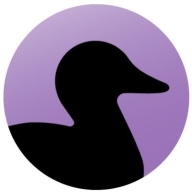

Coverity and SonarQube Cloud are competitive in code analysis software, each offering unique benefits. Coverity has the upper hand in detailed security analysis and low false positives, while SonarQube Cloud leads in user-friendliness and ongoing code quality improvements.
Features: Coverity is known for its low false positive rate, comprehensive security checks, and seamless integration with CI/CD tools. Its interprocedural analysis provides deep insights into C++ and C# codes. SonarQube Cloud excels at continuous code analysis, helps in reducing technical debt, and supports strong integration with version control tools.
Room for Improvement: Coverity needs enhancements in UI and integration support, as well as more dynamic scanning capabilities. Also, improvements in API support and IDE integration are needed. SonarQube Cloud would benefit from better reporting features and reduced false positives, along with improved documentation for setup and integration processes.
Ease of Deployment and Customer Service: Coverity offers versatile deployment options, including on-premises, hybrid, and private cloud, catering to varied business needs. Its customer support is generally responsive. SonarQube Cloud's public cloud operation simplifies use and maintenance, while providing adequate online support resources and community help.
Pricing and ROI: Coverity is priced based on user count and is considered expensive, though it provides good ROI through early defect detection. Its diverse licensing models add adaptability but raise cost. SonarQube Cloud is more affordable, offering competitive packages based on lines of code, making it accessible for smaller companies. Both solutions enhance code quality and security, but Coverity demands a higher investment, while SonarQube Cloud provides a balance of cost and functionality.


Coverity gives you the speed, ease of use, accuracy, industry standards compliance, and scalability that you need to develop high-quality, secure applications. Coverity identifies critical software quality defects and security vulnerabilities in code as it’s written, early in the development process, when it’s least costly and easiest to fix. With the Code Sight integrated development environment (IDE) plugin, developers get accurate analysis in seconds in their IDE as they code. Precise actionable remediation advice and context-specific eLearning help your developers understand how to fix their prioritized issues quickly, without having to become security experts.
Coverity seamlessly integrates automated security testing into your CI/CD pipelines and supports your existing development tools and workflows. Choose where and how to do your development: on-premises or in the cloud with the Polaris Software Integrity Platform (SaaS), a highly scalable, cloud-based application security platform. Coverity supports more than 20 languages and 200 frameworks and templates.
SonarQube Cloud offers static code analysis and application security testing, seamlessly integrating into CI/CD pipelines. It's a vital tool for identifying vulnerabilities and ensuring code quality before deployment.
SonarQube Cloud is widely used for its ability to integrate with tools like GitHub, Jenkins, and Bitbucket, providing critical feedback at the pull request level. It's designed to help organizations maintain clean code by acting as a quality gate. This service supports development methodologies including sprints and Kanban for ongoing vulnerability management. While appreciated for its dashboard and integration capabilities, some users find initial setup challenging and note the need for enhanced documentation. The recent addition of mono reports and microservices support offers deeper insights into security and code quality, though container testing limitations and false positives are noted drawbacks. Manual intervention is sometimes required to address detailed reporting, with external tools being necessary for comprehensive analysis. Notifications for larger teams during serious issues and streamlined integration of new features are also areas of improvement.
What are the key features of SonarQube Cloud?In specific industries, SonarQube Cloud finds application in finance and healthcare where code integrity and security are paramount. It allows teams to identify critical vulnerabilities early and ensures that software development aligns with industry regulations and standards. By continuously analyzing code, it aids organizations in deploying secure and reliable applications, fostering trust and compliance.
We monitor all Static Application Security Testing (SAST) reviews to prevent fraudulent reviews and keep review quality high. We do not post reviews by company employees or direct competitors. We validate each review for authenticity via cross-reference with LinkedIn, and personal follow-up with the reviewer when necessary.